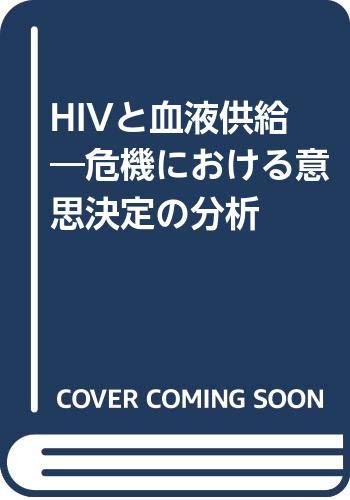1 0 0 0 OA <判例研究>占有改定による占有の取得と民法第一九二条の適用の有無
- 著者
- 金山 正信
- 出版者
- 同志社大学
- 雑誌
- 同志社法學 (ISSN:03877612)
- 巻号頁・発行日
- vol.12, no.4, pp.78-84, 1960-10-30
判例研究
- 著者
- Jan-Ola Ingemar Ostman
- 出版者
- U.M.I. Dissertation Information Service
- 巻号頁・発行日
- 1990
- 著者
- IHI [編]
- 出版者
- IHI技術開発本部管理部
- 巻号頁・発行日
- 2007
1 0 0 0 人名の語構造
- 著者
- 田籠 博
- 出版者
- 九州大学国語国文学会
- 雑誌
- 語文研究 (ISSN:04360982)
- 巻号頁・発行日
- no.99, pp.52-43, 2005-06
1 0 0 0 OA 『舎密開宗』と宇田川榕菴(<特集>日本の化学の黎明 : 上方に芽生えた化学)
- 著者
- 林 良重
- 出版者
- 社団法人日本化学会
- 雑誌
- 化学と教育 (ISSN:03862151)
- 巻号頁・発行日
- vol.37, no.5, pp.462-466, 1989-10-20
1 0 0 0 Papers presented at ... meeting
- 著者
- American Chemical Society Division of Polymer Chemistry
- 出版者
- American Chemical Society
- 巻号頁・発行日
- 1960
1 0 0 0 電子ジャーナル一部売りの動向
- 著者
- 原田 英二 渡辺 怜子 児嶋 紀子 水野 充
- 出版者
- 国立研究開発法人 科学技術振興機構
- 雑誌
- 情報管理 (ISSN:00217298)
- 巻号頁・発行日
- vol.45, no.11, pp.770-780, 2003
インターネット時代の到来により,電子ジャーナル出版は加速され,学術雑誌の世界では一般的なものとなってきた。電子出版には従来の冊子体ベースの出版物にはないさまざまなメリットが見られるが,電子化により,雑誌に縛られない,論文単位での扱いが容易となった点もそのひとつである。そして,それに応じて論文の個別売り,いわゆる一部売りサービスが登場してきた。一部売りサービスによる論文の購入は,出版社だけでなく,アグリゲータ,二次データベース経由によっても可能となってきている。ここではそれら一部売りを扱う業者を出版社,アグリゲータ,二次データベースサービスに分けて整理し,それぞれの特徴をまとめた。さらに,提供業者ごとの価格を調査し,比較を行った。
1 0 0 0 知恵蔵 : 朝日現代用語 : ちえぞう
1 0 0 0 イミダス = Imidas
- 出版者
- 集英社
- 巻号頁・発行日
- 2004
- 出版者
- Wiley
- 巻号頁・発行日
- 1985
1 0 0 0 OA 社会法判例研究(第四一回)
- 著者
- 古川 貴之
- 出版者
- 九州大学
- 雑誌
- 法政研究 (ISSN:03872882)
- 巻号頁・発行日
- vol.71, no.2, pp.513-524, 2004-10-12
1 0 0 0 OA 米国における内部統制概念の法的展開とわが国の課題
- 著者
- 柿崎 環
- 出版者
- 跡見学園女子大学
- 雑誌
- 跡見学園女子大学マネジメント学部紀要 (ISSN:13481118)
- 巻号頁・発行日
- vol.2, pp.41-57, 2004-03
現在、内部統制とは「業務の有効性と効率性、財務報告の信頼性、関連法規の遵守という目的達成に関して合理的保証を提供することを意図した、事業体の取締役会、経営者およびその他の構成員によって遂行される一つのプロセス」とする米国のCOSO報告書による定義が、デファクト・スダンダードとされている。しかし、米国において内部統制概念は、単なる会計マターではなく、証券市場の情報開示・会計・監査を支える個々の企業のガバナンスの根幹部分としての法的側面に一貫して重大な意義があることに留意すべきである。すなわち、企業の内部統制システム構築は、証券市場の公正性確保にむけた情報開示の「質」の向上の前提条件であるとともに、経営者の対市場責任の基礎として把握され、その更なる充実が、適時開示の法的基礎をその実現手続と共に示す2002年米国企業改革法においてみてとれる。わが国においても平成14年、委員会等設置会社の取締役会が、商法施行規則において内部統制構築の基本方針を定めることを義務付けられたが、ともに証券市場を活用する公開株式会社を前提とする以上、共通の問題意識をもって内部統制の構築やその法規制のあり方を検討する必要がある。本稿においては、米国の内部統制規定をめぐる歴史的展開を踏まえて、我が国においても早急に対応が求められる商法施行規則193条等について検討し、そこに列挙された内部統制構築のための具体的項目から浮かび上がる問題点や課題について、さらには監査役設置会社における内部統制構築のあり方と委員会等設置会社の場合のその違いについて若干の考察をくわえ、最後に、我が国の内部統制に対する市場法的視点からみた法規制のあり方について言及した。
1 0 0 0 IR 日本における鋼スクラップ中のトランプエレメントの除去に関する研究活動
- 著者
- 片山 裕之 佐野 信雄 雀部 実
- 出版者
- 島根大学
- 雑誌
- 島根大学総合理工学部紀要. シリーズA (ISSN:13427113)
- 巻号頁・発行日
- vol.30, pp.99-114, 1997-03-25
The generation of obsolete scrap in Japan is increasing and expected to account for more than 40% of total steel production by the year 2010. To make effective use of all of this steel scrap generated, the deterioration of hot workability of steel products may arise as a problem caused by copper and tin accumulations. This paper selects and summarizes the results of research on the removal of residual copper and tin from steel scrap from among the research activities of two groups formed concerning the utilization of steel scrap - Committee for Removing Residual Elements from Steel Scrap of the Iron and Steel Institute of Japan (ISIJ) and Scrap Recycling Technology Research Project of the Japan Research and Development Center for Metals (JRCM).13; (1) If Japan is to use all of the steel scrap generated as feed material for steel production in 2010, the average removal ratio will have to be improved to about 55% for copper and 30% for tin.13; (2) When copper is present mixed with steel, mechanical separation following shredding (including cryogenic processing) is the most practical method for removing copper from steel scrap Separation of liquid copper from solid steel by adjusting the atmosphere conditions in the steel scrap preheating step, selective melting of copper in an aluminum bath, and selective dissolution of copper by a wet process with ammonia, for example, also have potential for practical application. Removal of copper by vaporization under vacuum promoted by the vigorous CO bubble formation was studied as the method for separating copper dissolved in steel. A combination of these methods is expected to achieve the target copper removal ratio of 55%.13; (3) Unlike copper, tin is low in content and less advantageous to be recovered. The addition of another step for the sole purpose of removing tin from steel scrap is not economically justified. The method of separating the tin coating as oxide film in the steel scrap preheating step and the method of vaporizing tin as stannous sulfide (SnS) in the steel scrap melting step were investigated. Each method was confirmed to be capable of removing tin from steel scrap by about 40%.13; (4) A total process was proposed that is composed of steel scrap preheating, melting and dust treatment and removing these residual elements from steel scrap. The total process is planned for evaluating each technology as a combined system.
1 0 0 0 OA 近松傑作全集 : 新釈插画
1 0 0 0 フランスの国民投票制度
- 著者
- 下田 久則
- 出版者
- 国立国会図書館調査及び立法考査局
- 雑誌
- レファレンス (ISSN:00342912)
- 巻号頁・発行日
- vol.21, no.9, pp.77-85, 1971-09




